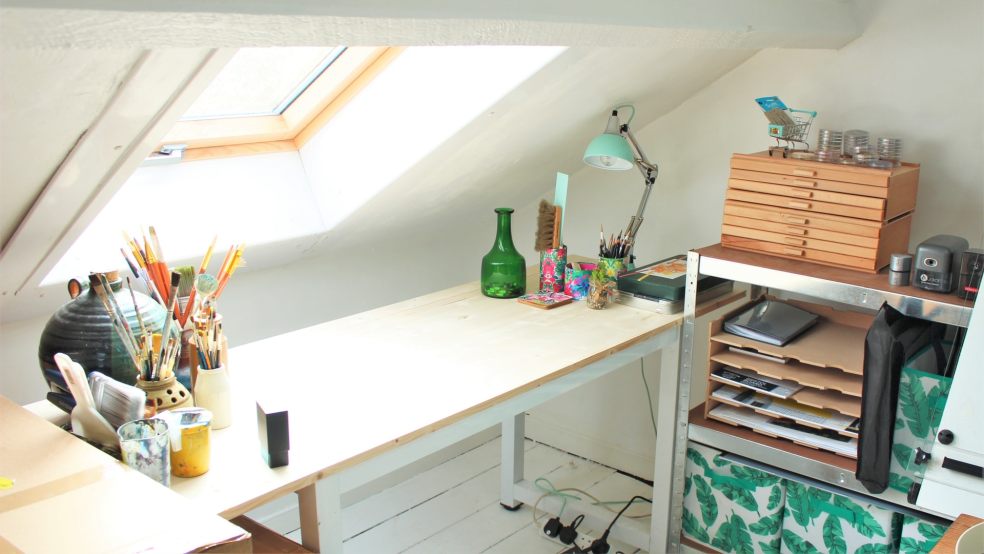
How to plan a loft conversion
The Three Types Of Loft Conversion
The Internal Loft Conversion
The first type of loft conversion is the internal loft conversion. This type of loft conversion requires very little alteration to the current exterior of the home. Some additions you may need are skylights, stud walls, insulation, and plumbing alterations.
Skylights are windows placed in the roof and stud walls are plasterboard walls found in all new build properties.
Typically, insulation and strengthening the floor are issues you come across. These are often the most cost-effective types of loft conversion and NABC can help find you the right accredited builders for the job.
The Remove and Rebuild Conversion
The remove and rebuild loft conversion, also known as the roof off loft conversion, can be the most expensive of the three.
Usually you would be removing both parts of your sloping roof and adding back a completely new construction. This structure would have very steep sloping walls, nearly as straight as your outer walls with an almost flat roof on top.
You usually only embark on this type of conversion if the headroom is insufficient. This also is usually defined by the age of your property.
If you have a pre 1960s house, you will usually have a traditional framed and truss style roof frame. This means that ceiling joists and rafters, with supporting timbers are cut to size on site and assembled.
This type of space can usually be easily opened up for conversion.
If you have a post 1960s property your roof will more than likely be constructed in a factory, using thinner and cheaper timber, but supported by braced diagonal timbers. Whilst easily erected, usually in one day, typically there are no loadbearing walls beneath and you’ll probably need to strengthen the structure with additional support.
This means steel beams would be inserted strategically below the roof to take the added weight your loft conversion will bring. This will also take weight from your purse or wallet, leaving that feeling considerably lighter.
The Dormer Loft Conversion
Did you know that there are 5 types of dormer conversion?
-
The Single Dormer – usually installed in conservation areas as they are looked upon favourably by planning permission departments.
-
The Side Dormer – used to increase head height in houses with hipped roofs. The side dormer is installed where the access to the loft is found under the hip.
-
The Full Width Dormer – this style of loft conversion maximises the available space often delivering a completely different look and feel to other types of loft conversion.
-
The L Shaped Dormer – mainly found or constructed on older, victorian for example styled properties. Usually with a rear addition to the original house. They provide a huge increase in space.
-
The Hip to Gable – involving one or more of the hips being replaced by a gable wall. This would be constructed where the roof slopes in
Why You May Have A Loft Conversion
People choose to convert their loft space for any number of reasons. The main reasons are for an extra bedroom, living area or home office. Also loft conversions add a lot of value to a property (in some cases up to 20%) and in turbulent markets like the UK housing market.
A loft conversion is a great way to add more space to a home without the added costs of upscaling and then dealing with the stress of moving home. Often we benefit more when we upgrade familiar surroundings to create a lifestyle, than to try and uproot and buy something for practicalities sake.
Self Contained Loft Conversion
In and around London many people are converting their lofts into self contained living spaces. Effectively creating a second income by turning the loft space into a studio flat or apartment.
These are also great if you have older children that you want out of your living space. This way you can still keep a roof over their heads but have your own living space without real interruption.
Self contained loft conversions can add great value to your property in both lifestyle and bank balance. However they can be far more costly than a typical bedroom conversion, depending of course on the finish.
The Home Office Loft Conversion
The home office loft conversion has become so prevalent with the rising number of home workers, freelancers and consultants.
Creating a space that is free from the rest of the family home can actually be more worthwhile than you think. Often people choose summer houses as an office at home, but here at Hunt Property Services we think children should play in gardens and adults can work in the loft.
Who You May Need To Help
I’ve heard people say that they can convert a loft on their own. That it’s really easy and as long as you follow the guidelines you can’t go too far wrong.
But ask yourself this, how do you know if you need steel beams? and if you do how do you calculate the size of beam you need?
How do you strengthen the loft floor? What type of insulation do you need? How do you install a skylight or two? Or run electric cables or plumb pipes in?
What happens if you need a new boiler to deal with the additional pressure needed to run the water up?
Doesn’t sound so easy now does it?
These are just a few of the questions that will be thrown at you by your conversion and if you cannot answer them then seek a professional. I never advocate asking friends or family for tradesmen referrals and if you do, please ensure that you do your homework on them.
The building trade is unfortunately awash with poor standards in workmanship and when you may possibly be investing upwards of £30,000 in your conversion you need to ensure you have your references, background checks and insurances in place.
There are several people that will be involved in your project
The Experienced Builder
So you need an experienced builder? National Association of Building Contractors can help you find a builder.
Get in touch today to find an accredited builder in your area
Phone: 01752 943 118
Email: info@nabc.org.uk
Web: www.nabc.org.uk

















